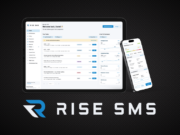
Saving is a pretty simple concept. You set money aside for rainy days, for large purchases like a vacation or a down payment on a new house, and for most certainly what is typically the largest expense in your life – funding your retirement when the paychecks stop. That’s where 401k accounts and Individual Retirement Accounts (IRAs) come into play. Many of you have signed up for your company’s 401k and chosen a target date fund or a mix of investments. But how do you know if you are making the best decisions?
Let me first begin with a brief history lesson. Retirement plans have changed much over the past hundred years or so, and much more so in the past 40 years. The first private pensions showed up in the late 1800s, and Social Security was introduced following the Great Depression. Social Security ensured that all Americans of a certain age would be entitled to retirement benefits, whether or not they were fortunate enough to have a private pension. Pensions were fairly commonplace as American companies experienced growth and economic success after World War II, but that changed following the staggering inflation and market crash during the 1970’s. In 1978, Congress passed legislation which opened the door to 401k plans.
Ever since that legislation passed, companies have steadily shifted the financial burden of funding retirement to the employee. There are a number of reasons for this, but the main one is that the annual funding requirements for pensions can be daunting. When stock markets crash, legally-mandated funding requirements can cripple a company. The airline industry is all too familiar with pensions causing companies to buckle and enter bankruptcy. Today, some companies still offer pensions, however, most will contribute to employee retirements via employer contributions to a 401k. Ultimately, it’s up to you, alongside your employer, to determine your level of participation in these 401k plans.
Pensions are fantastic, but our main focus today will be the 401k, since it is within these plans that you have the most control and choices to make. So, what are the key issues you have to consider when signing up for a 401k plan? There are many:
- How much do you contribute?
- Do you save via pre-tax (Traditional IRA) or Roth IRA salary deferrals? Maybe even after-tax deferrals?
- Which investments will you use?
- Is saving in the 401k alone enough to accomplish your goals?
How much should I contribute to a 401k?
Before determining the amount to contribute, the first question to answer is: Should I contribute to a 401k? Yes, you should participate in your 401k, and the power of compounding suggests you start as soon as possible. Some plans require you to save in order to get a company match while others make contributions whether you participate or not. In 2019, you can contribute up to $19,000, and how much you contribute may depend on your cashflow situation and/or tax situation, which we will discuss next.
Do I make my contributions pre-tax or via a Roth IRA?
Pre-tax contributions reduce your taxable income, which is great because they help lower your tax bill. Your participation is ultimately subsidized and encouraged by the IRS when you choose a pre-tax contribution. However, depending on your income level and time horizon until retirement, a Roth contribution may be the more attractive strategy. Roth dollars do not reduce your income, so you’re paying tax on these funds now at today’s tax rates instead of at the higher tax rates you will face when you retire and start drawing on your retirement. But Roth contributions grow tax-deferred and (as long as you follow the rules) all future distributions are tax-free. That can be tremendously powerful provided you have a long time horizon until retirement and you anticipate being in a higher tax bracket at the time of your retirement. But if you’ve been flying for some time and your salary is already approaching its peak, this may not be the preferred option.
Also noteworthy is that some 401k plans allow you to contribute above and beyond the $19,000 limit, and these are considered after-tax deferrals. If you are allowed to do an in-service rollover, you can move those funds (sometimes annually or bi-annually) to a Roth IRA. So depending on your 401k plan design, you could make all pre-tax contributions for your normally allowed $19,000 deferral, and you could also make a sizeable after-tax contribution, establishing a pretty smart Roth strategy at the same time!
Which investments do I use?
Your investment decisions will make a big impact on your retirement, and your decisions are very personal. Are you conservative or aggressive or somewhere in the middle? Maybe you haven’t a clue. Several years ago, companies started offering Target Date Funds (TDFs) to help the lay-investor. These funds are more growth-oriented for the dates furthest in the future, and they invest more conservatively over time. TDFs seem to be an easy choice, but our problem with these funds is that they ignore your appetite for risk. What does that mean? You could have two pilots who retire at the same time and choose the same TDF, but one pilot doesn’t mind a lot of fluctuations in statement values of the account while the other is very sensitive to day-to-day changes. A Target Date Fund invests based on the time horizon alone, blind to the investor’s risk sensitivity.
You could also build your own mix of equity funds, including U.S. investments, international investments, and bond funds. That requires maintenance just like your lawn and your car. You have to review performance, rebalance the mix as investment values change, and possibly make some adjustments based on your views of the economy. And to complicate the self-directed approach a bit further, many pilot 401k plans include a brokerage account platform. Brokerage platforms open the doors to anything that trades on the major exchanges: mutual funds, exchange traded funds, individual stocks and bonds and maybe even options. We can’t give advice on those choices here, but we encourage a disciplined and diligent approach.
Is saving in the 401k enough?
This is a great question to finalize some thoughts. Even if you max-out your 401k and get a healthy contribution from your employer, you may fall short of accomplishing your goals. It all depends on what you envision for retirement. What kind of lifestyle do you enjoy? Do you live in a state with income taxes? Will you move or downsize? What’s your family’s history of longevity, and how is your health? Do you have a pension, whether military or airline, and so on. These answers are extremely meaningful for your retirement saving planning strategy, and they should drive your decision-making process.
Retirement planning is one part, albeit a large one, of holistic financial planning. Your 401k is a critical piece of the plan, and we encourage you to set the course for retirement by starting with some of these questions.


























































































































